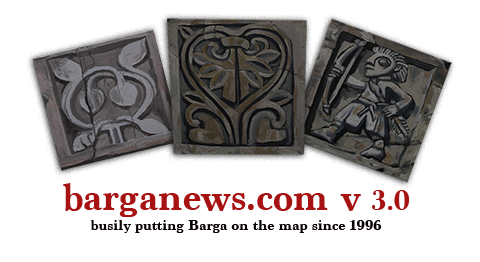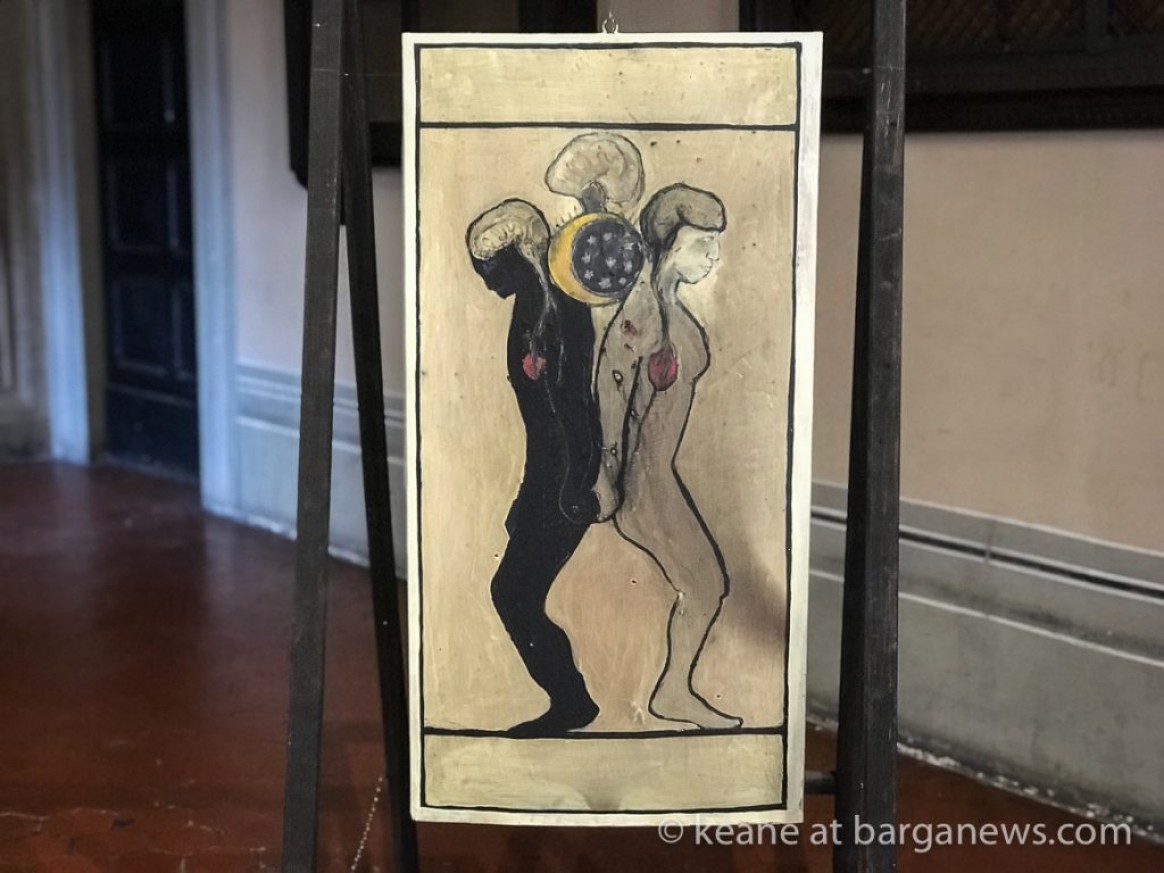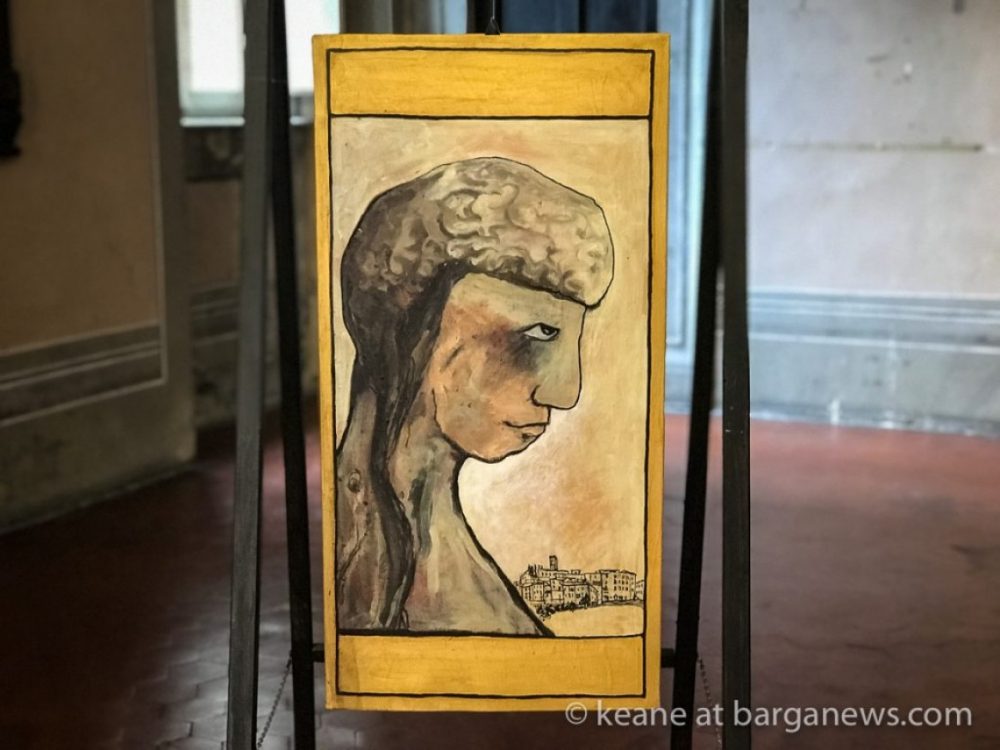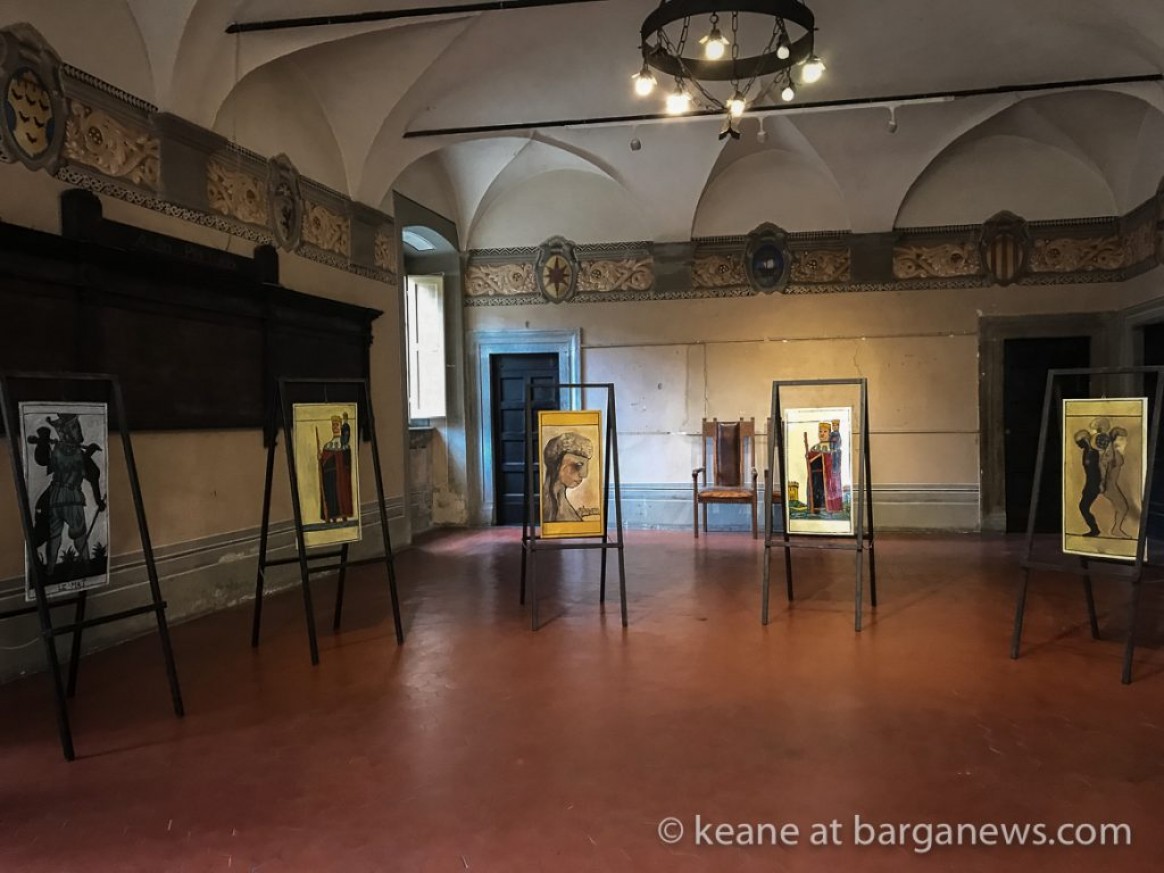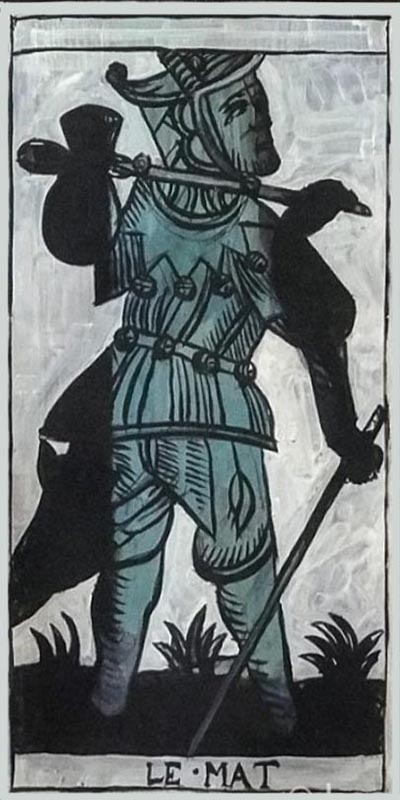Six oil paintings on vertical metal panels – all reminiscent of the Barga Pop Tarot paintings from 2016 (article here) with black outlines and limited colouring.
The symbolism found on some early tarot cards led many people to believe that tarot cards were in fact the expression of ancient streams of wisdom… the eternal, esoteric and holy tradition itself.
Following this belief, modern tarot packs draw upon the teachings of a tremendous range of traditions, including Kabbalah, Western esotericism and alchemy, Buddhism, Sufism, Egyptian initiations, mystical Christianity, Gnosticism, Neoplatonism, and Celtic mythology.
The six panels on display reflect some of that mix and match of traditions with three of the panels showing images of the patron saint of Barga – San Cristoforo – reinterpreted as a Tarot card with images of Barga and Gallicano on either side and the Serchio river running between them.
Another shows a black and white image of the Le Mat – “the madman” or “the beggar” who some now believe to represent San Rocco.
The other two remaining panels contain images of a Hasnamuss. The first one with an image of Barga below the head of the Hasnamuss and the second version – a three-brained being with a hidden image of a horses head.
Gurdjieff described these qualities of the Hasnamuss:
- Every kind of depravity, conscious as well as unconscious
- The feeling of self-satisfaction from leading others astray
- The irresistible inclination to destroy the existence of other breathing creatures
- The urge to become free from the necessity of actualizing the being-efforts demanded by Nature
- The attempt by every kind of artificiality to conceal from others what in their opinion are one’s physical defects
- The calm self-contentment in the use of what is not personally deserved
- The striving to be not what one is.
Although the origin of this term is uncertain and has interesting meanings when analyzed in Arabic, Hebrew , etc., in Sanskrit we find Hasnamuss can be derived from हा Ha: a Sanskrit particle expressing sorrow, dejection, pain; अश्न asna: voracious, eating, consuming; or, a stone; मूष् mus: mouse, thief
